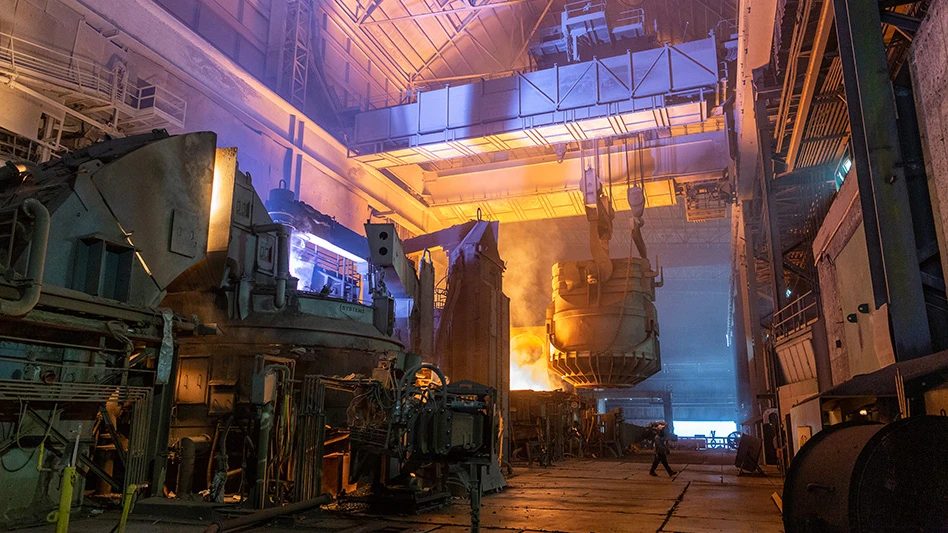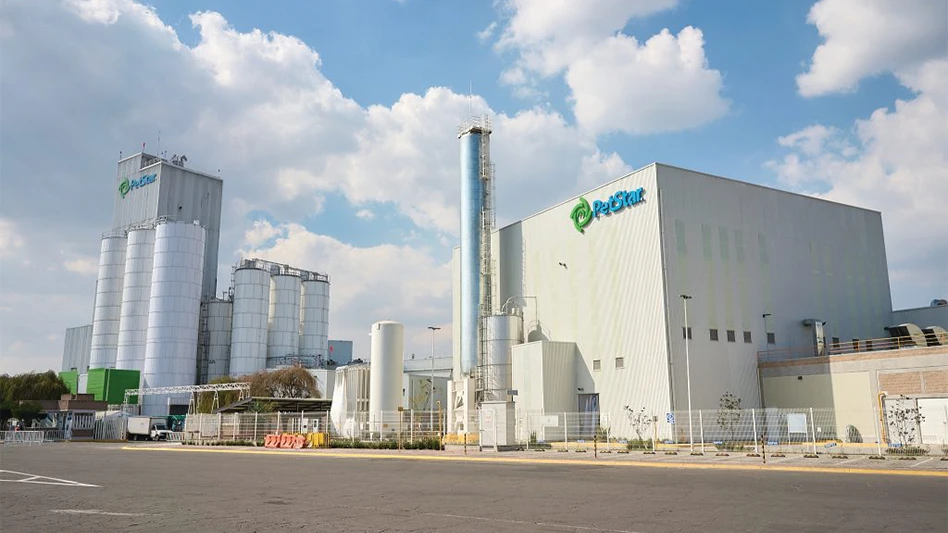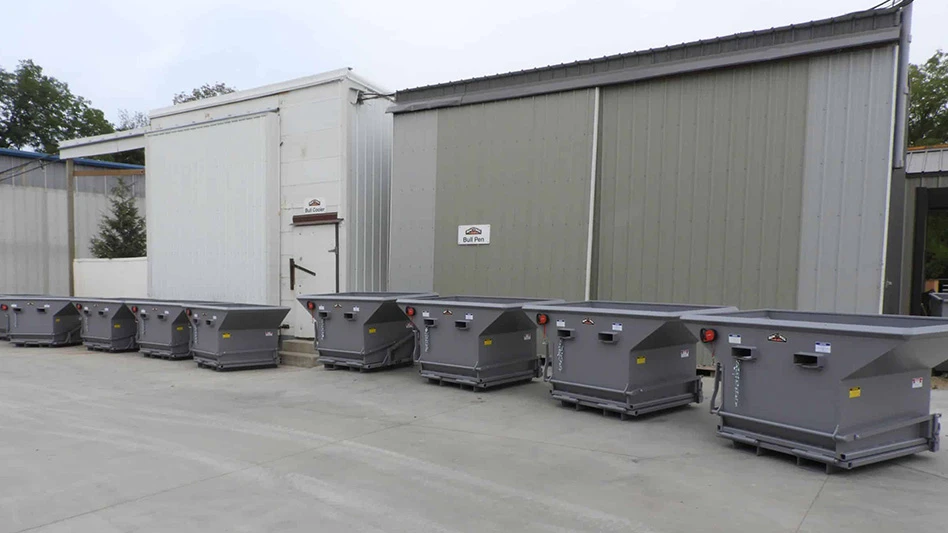It is only a matter of time.
That’s what many observers said in late 1997 when the bottom dropped out of several Asian economies within a two-month span.
While the potential still exists that many American workers and consumers will remain relatively unaffected by the Asian turmoil, the same cannot be said for most of those making their livings within the steel and ferrous scrap industries.
As 1998 progressed, the flow of scrap from North America to overseas destinations—especially on trans-Pacific routes—dwindled to a trickle of outbound ships. Year-end ferrous scrap export figures will be down significantly, but the year-to-year comparisons alone do not tell the whole story.
“It’s not just that exports will be down 25%,” says William M. Heenan Jr., president of the Steel Recycling Institute, Pittsburgh, “but that entire 25% all happened the last five months of the year. Those were five very quiet months.”
SHIPPING FALL-OFF
As measured by the U.S. Commerce Department, U.S. exports to nearly every major destination for outbound ferrous scrap were down for 1998. In many cases, the reductions were dramatic.
In 1997, South Korea provided one of the friendliest destinations for U.S. scrap, accepting more than 2.75 million short tons of ferrous scrap in the first nine months alone. But in the first nine months of 1998, exports to South Korea were down 60% to just slightly more than one million short tons.
In that same time frame, U.S. shipments to China were off nearly 25% and ferrous scrap exports to Turkey were down 13%.
Among major destinations, Mexico was also buying less scrap, down almost 40% and some 550,000 short tons in volume in the nine-month span. Canada remained a steady trading partner, with just a 1% drop in scrap imported from the U.S.
Some countries that purchase scrap in lower volume amounts also proved to be less welcoming destinations in 1998. India’s purchases were off a staggering 85% in the first nine months of 1998, while Japan purchased 71% less scrap from the U.S. Two more Asian nations that decreased their buying were Malaysia—off 53%—and Taiwan, with a decrease of 48%.
While ramped down production at Asian mills and foundries provided part of the reason for fewer export shipments, currency exchange rates were another factor. Currencies such as the Korean won and the Thai baht plummeted in exchange value against a strong U.S. dollar in late 1997—and stayed low in 1998. “Many of the overseas customers can’t afford to buy scrap from North America,” notes Heenan. “Currency rates have dramatically impacted how much they can buy from this country.”
The year-end numbers will in all likelihood reveal dramatic drop-offs to most destinations for ferrous scrap leaving the U.S. In addition to changing the established global flow of ferrous scrap, the loss of those export markets had several affects on the U.S. scrap industry.
LATE SUMMER PLUMMET
Stuart J. Simms of Parkwood Iron & Metal, Cleveland, calls scrap “the only true vestige in today’s economy of supply and demand.”
As such, the rapid change on the demand side of the equation—brought about in part by the lack of scrap export markets and also by slower production at many U.S. mills—created not only an instant oversupply situation, but also quick pricing changes.
As measured by the American Metal Market composite price survey of No. 1 Heavy Melt, the changes in the supply-demand equation began affecting pricing in March of 1998, when prices dropped about $7 per ton. After holding steady in that range for about four months, prices slipped in July before dropping at a rate of $10 or more per month from August through October and then another $8.50 in November.
During that free-fall period in late summer and early fall, one southern ferrous scrap buyer noted that “publications can’t keep up with the pricing movements. The prices are moving downward even faster than these publications can track.”
The pricing toboggan ride was by no means caused by the disappearance of export markets alone. But Americans who point the finger of blame overseas should probably not be considered xenophobic for doing so.
At the same time American scrap shipments overseas were slowing to a trickle, U.S. and Canadian ports were staying busy unloading steel coils, bars and beams coming over from Asia and eastern Europe. The onslaught of imported steel began early in 1998 and intensified during the spring and summer months.
By fall of 1998, steel making production was slowing down at most American mills, with imported or “dumped” steel from overseas being blamed. In announcing a shutdown at part of its Cleveland works, LTV Corp. cited a “rate of incoming orders [that has] been reduced by record-high levels of unfairly traded imported steel being offered at prices that violate established U.S. trade laws.”
With North American steel mills slowing down—and in the worst cases—shutting down, that reduced demand for scrap at the same time that supply was rising due to the loss of the export markets. “You have had a dramatic reduction in scrap purchases by the domestic steel industry,” states SRI’s Heenan.
And to create yet one more competitive difficulty for the U.S. scrap industry, scrap and alternative iron units from overseas also began arriving in American ports, “It seems like every ‘Fe’ unit in the world found its way into the United States in 1998,” says one east coast processor.
“We’re hearing that a lot has come in through New Orleans,” says a southern scrap buyer. “A lot of scrap substitutes and pig iron is also coming in from overseas. A lot of it is being used in place of bushling and plate and structural in the South.”
MARCHING INWARD
With their overseas customers making dramatically fewer purchases, east and west coast scrap processors did not simply shut down and wait out the Asian crisis. They looked instead for domestic consumers who were accepting scrap shipments.
The timing of the inward march of scrap from the Pacific and Atlantic coasts coincides with the plummeting per ton pricing for ferrous scrap. “I’d say you saw the first indications in late May and June,” says Heenan. “It really hit the fan in August. You can see the pricing and follow that flow pattern,” he adds, referring to the $8 to $10 per month drop offs in ferrous scrap pricing that began in August and occurred through November.
Simms of Parkwood Iron & Metal calls what happened “a reverse domino effect.” He portrays it as a scrap oversupply situation that “hits the east coast and west coast markets. When you clog up the ports with scrap, it starts moving inward. It finds the next market inward until eventually it reaches Cleveland,” he says of his own home town.
The subsequent price drops were the most noticeable and across-the-board result of the scrap glut. Simms claims that despite the presence of more scrap in his Great Lakes region market, his flow of tonnage has remained consistent. “My tonnage is not off per se. I might have had to do a little more homework to sell it, but I have not missed a sale because of market conditions,” he remarks.
But the price plummet has had a noticeable effect on the buy side. As over-the-scale pricing dropped to reflect the low prices being paid by mills, obsolete scrap flows began to slow. Auto shredder operators in particular have been hurt by the withholding of auto hulks as dismantlers and other generators wait for better prices to return.
Peddler or street trade ferrous scrap supply is also down dramatically, according to processors. “Peddler trade is off,” states Jack Vexler of Monterrey Iron & Metal, San Antonio. “I’m keeping my prices artificially high to peddlers to keep the flow up.”
“The overall traffic flow across the scales is really non-existent,” states a different southern scrap buyer. “I think as far as auto hulks, [dismantlers] are just going to sit and hold them until prices come up,” he adds.
The inflow of other forms of obsolete ferrous scrap, such as white goods, is also slowing down. “A good percentage of appliances—25% or more—that comes in from the peddler network has dried up,” says Heenan. “Those peddlers, of course, stop bringing them in when they’re paid nothing.”
“Are we headed for the days when appliances lined the side of the roads?” wonders one scrap buyer.
“You have seen the price of scrap drop almost in half,” notes Heenan. “It’s down almost to a point where shredders and scrap processors are not able to pay for the scrap coming into their gates.”
Fortunately, prompt scrap supplies have remained fairly steady, with many North American manufacturing plants humming along despite the global economic turmoil. As the traditional Christmas-New Year industrial slowdown approached, Simms noted that many of his prompt sources were “winding down just a little bit. Steel service centers are down a little bit; fabricators are down a little bit. But tonnage is still pretty steady.”
MORE SHIPS ON THE HORIZON?
Ferrous scrap exporters have to hope that, much like with ferrous pricing, export volumes have bottomed out at their lowest level and will show signs of a rebound.
The re-entry of foreign buying into the American ferrous scrap market is pointed to as one of the key turning points needed to brighten the ferrous outlook.
At the same time, if Asian and eastern European nations buy more U.S. scrap only to send more cut-rate steel back over to North America, this could hardly be considered a long-term solution.
There are those, such as Heenan, who feel that protecting and bolstering the U.S. steel industry is still the best way to ensure that ferrous scrap has a brighter future in the near term. “It’s not a case of free trade, it’s unfair trade,” he says of the steel pouring into America from Asia, Russia and Brazil.
Are there export destinations that can act as an escape valve in 1999 and take some of the oversupply pressure off of ferrous scrap?
In San Antonio, Vexler notes that he has begun to receive feelers from companies in Mexico, where imports of scrap from the U.S. may be down nearly 40% in 1998 when final numbers are compared to 1997. “Some of the buyers who have visited me from Mexico say there is no scrap in Mexico. They need it badly, even though they’re not happy with the price they have to pay against a strong dollar. But if they don’t get the scrap, their foundry won’t run. I understand a couple of the mills down there are just about out of scrap as well.”
He adds that he took another order for a Mexican mill in December “that had to be filled very promptly, or they would have had to shut down for a lack of scrap.”
Whether Mexico can increase its tonnage purchased in 1999 to meet 1997 figures remains to be seen. The answer to that question is an important one, however, since in 1997 Mexico was second only to South Korea as a ferrous scrap export destination.
The same mystery surrounds South Korea, where the economic and currency crises have taken a severe toll on an economy that was once widely regarded as one of the most enviable in the world. If attempts at rejuvenating the Korean economy fall short this year, that alone could make 1999 the second straight year of disappointment for U.S. exporters of ferrous scrap.
The author is the editor of Recycling Today.

Explore the January 1999 Issue
Check out more from this issue and find your next story to read.
Latest from Recycling Today
- Autocar releases Smart Battery Cable to advance refuse truck fire safety
- PLASTICS launches Positives of Plastics website
- Impact Air Systems launches compact ZAC400
- PCA to shut down paper machines at Washington containerboard mill
- BMRA provides landfill guidance for UK shredder operators
- Fornnax high-capacity tire recycling plant
- EU introduces measures to secure raw materials, strengthen economic security
- US Steel to restart Illinois blast furnace





